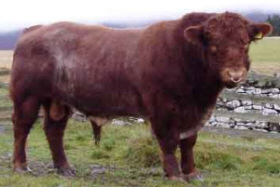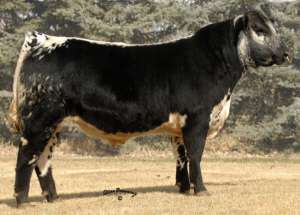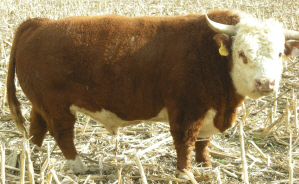



Luing
History
The Luing Breed (pronounced "Ling") was developed by the Cadzow brothers on the Island of Luing which is situated off the West Coast of Scotland. There are now herds of Luing throughout Great Britain and Ireland, Europe, Canada, New Zealand, Australia and South America. Photo courtesy of Monzie Farm, www.monziefarm.co.uk |
The herd on Luing was started with the selection in 1947 of some of the best first cross Shorthorn/Highland heifers that could be procured. These heifers were bred to the Shorthorn bull, Cruggleton Alastair. Two sons of this breeding were kept and mated to their half sisters: Luing Mist in 1952 and Luing Oxo in 1953. From then on, by following up this in-breeding with line-breeding, the Luing breed was firmly established and with many generations sired by Luing bulls, they proved themselves as breeding true to type. The British Government officially recognised the Luing as a breed in its own right in 1965.
Characteristics
The Luing breed can be red, golden, white or a combination of those colours, they have a thick hide carrying a heavy winter coat, particularly the young cattle.Statistics
Comparative
 |
The heavy coat of a Luing cow will save up to 3.8 lbs of hay daily at zero degrees F (-17.8 C) and is easily shed in summer.
Distribution
There are now herds of Luing throughout Great Britain and Ireland, Europe, Canada, New Zealand, Australia and South America.References (the above information was cited from the following sites)
luingcattlesociety.co.uk
www.luingcattle.com
www.tasmanianluings.bigpondhosting.com
www.monziefarm.co.uk


